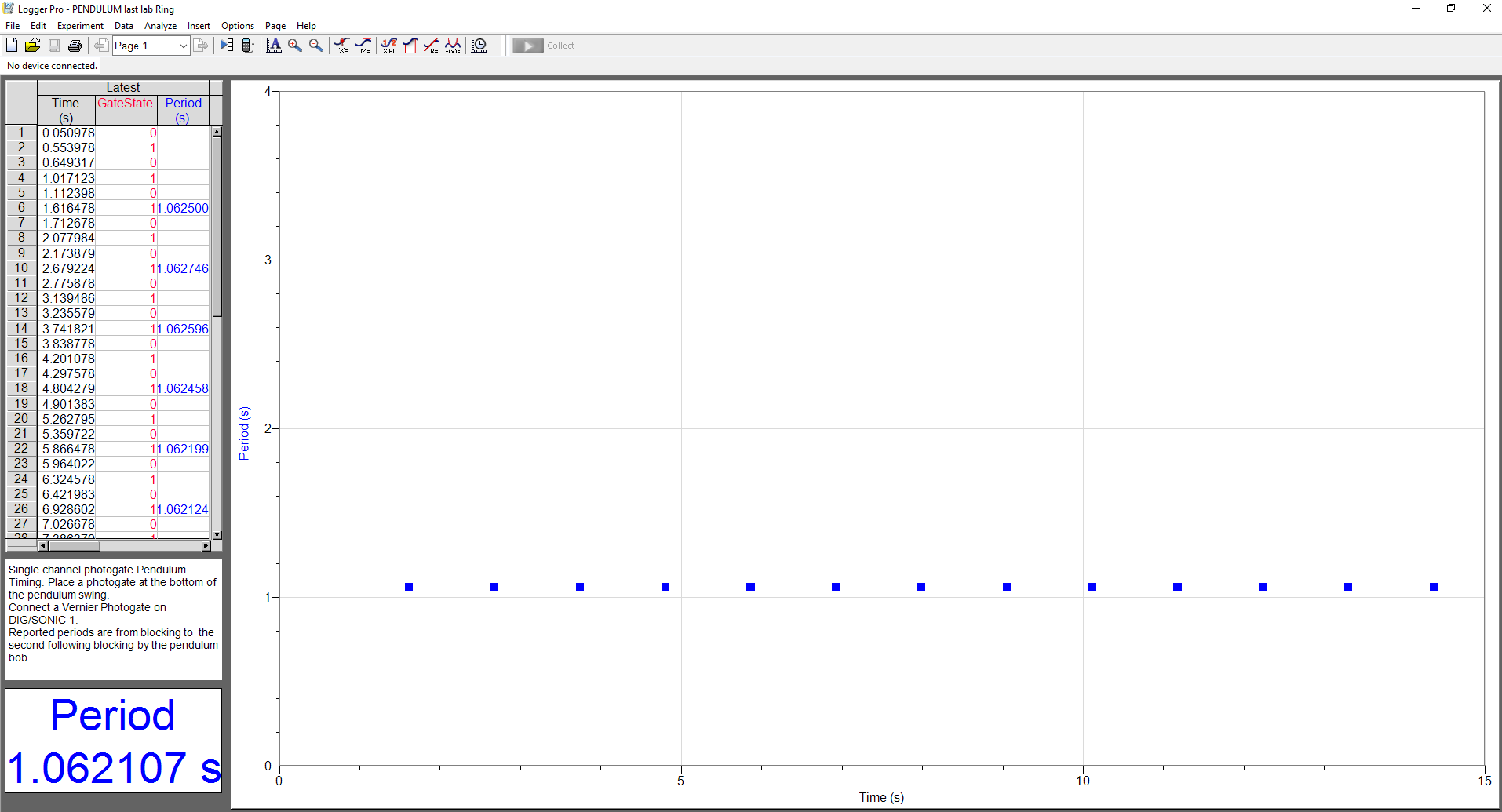Physical Pendulum
Lab Members:Jarrod Griffin
Christina Vides
Enio Rodriquez
Date Completed: November 28th 2016
In this lab, we found a calculated period for different pendulums, and then confirmed these calculations by experimentation.
Procedure/Apparatus:
In this lab, we used two different shapes, and found the period of each. Our first shape was a circle, and the other was a semicircle. We first found measurements of each, and then calculated what we thought the period would be using the moment of inertia we had previously calculated for homework. We then hung the shape on a nail as shown below. We attached some tape to the bottom of the shape so that it would brake the photo-gate sensor once per pass. We then recorded multiple passes in order to get an accurate measurement for the period. We repeated this for our two shapes.

Measured Data:
We used Logger Pro in order to find the period of our two shapes. Below is an example of the graphs we received by using Logger Pro and the photo-gate. The file we used in Logger Pro automatically calculated the period for us.



Calculated Data:
In order to calculate our estimated period for the two objects, we used formulas we had previously derived in our homework. Below is a more simple written formulas for both the ring and semi-circle. The formula for the period of the semi-circle is on top, with the period of the ring below.

Below is the use of these formulas.


Conclusions:
Our experiment went well. Our percent difference's were both under 5%, with one even being below 1%! Some errors in this lab were in how precise our measurements of mass and length were. We also could take into account the friction in the hinge as an error source.
We can assume that the mass of the paper clips will not matter much as they are located at or very close to the pivot, making the effect of the clips minimal to none.
The masking tape would have a bigger effect than the paper clips as the tape is farther away from the pivot, and by the way we did our calculations, distance away from pivot has more of an effect than the mass, if masses are small.
No comments:
Post a Comment